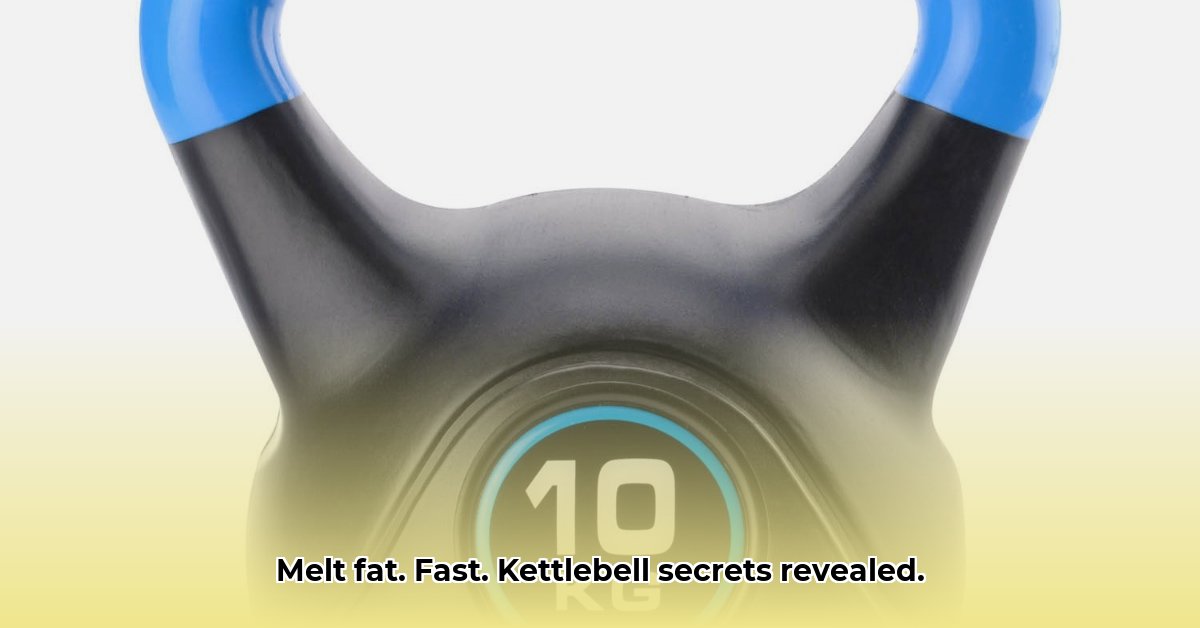
Kettlebell Training for Weight Loss: A Comprehensive Guide
Ready to transform your body and achieve your weight loss goals? Kettlebell training offers a powerful and efficient method to burn fat, build muscle, and improve overall fitness. This comprehensive guide will walk you through everything you need to know, from beginner-friendly exercises to advanced techniques, ensuring a safe and effective journey to a leaner, stronger you.
Safety First: Preparing for Success
Before you begin your kettlebell journey, prioritizing safety is paramount. Proper form and a thorough warm-up are crucial to prevent injuries and maximize results. Remember, consistency and correct form are key to achieving your goals. Rushing the process can lead to setbacks.
Warm-up (5-10 minutes): Begin with light cardio, such as jumping jacks or brisk walking, followed by dynamic stretches like arm circles, leg swings, and torso twists. This prepares your muscles and joints for the workout ahead.
Mastering Proper Form: Start with lighter weights to focus on perfect technique. Videos and potentially a consultation with a certified personal trainer can significantly improve your understanding of proper form and reduce the risk of injury. Don't compromise form for repetitions.
Beginner Kettlebell Workouts: Building Your Foundation
Beginners should start with fundamental exercises to build a strong base. The following workouts are designed to introduce you to effective kettlebell movements while ensuring safety. Remember, consistent effort, even with lighter weights, is more effective than sporadic, intense sessions.
Kettlebell Swings (2-3 sets of 10-15 reps): This dynamic movement engages multiple muscle groups for a full-body workout. Focus on hinging at the hips, not just using your arms; imagine swinging a pendulum. Maintain a straight back and engage your core throughout the movement.
Goblet Squats (2-3 sets of 10-15 reps): Hold the kettlebell close to your chest. Squat down, keeping your back straight, chest up, and knees aligned with your toes. This exercise targets your legs and glutes while strengthening your core.
Remember to prioritize proper form over the number of repetitions. Focusing on technique will yield better results and prevent injuries.
Intermediate Kettlebell Workouts: Progressing Your Training
Once you've mastered the basics, you can introduce more challenging exercises to increase intensity and muscle engagement. Progressive overload—gradually increasing weight, reps, or sets—is essential for continuous improvement. Don’t increase intensity too rapidly.
Kettlebell Cleans (2-3 sets of 8-12 reps): This dynamic exercise requires coordination and strength. Focus on smooth, controlled movements, and prioritize proper technique before increasing weight.
Kettlebell Presses (2-3 sets of 8-12 reps): Build upper-body strength with presses, maintaining a stable core and controlled movements to prevent injury.
Advanced Kettlebell Workouts: High-Intensity Interval Training (HIIT)
For advanced users, HIIT workouts maximize fat burning and boost metabolism. These workouts involve short bursts of intense exercise followed by brief recovery periods. HIIT workouts are highly effective for fat loss, but remember to listen to your body and adjust rest periods as needed.
Sample HIIT Circuit (3 rounds):
- Kettlebell Swings: 30 seconds
- Goblet Squats: 30 seconds
- Kettlebell Cleans: 30 seconds
- Rest: 60 seconds
Remember, proper form is crucial even during high-intensity workouts. This intense workout maximizes fat burning, but prioritize form over speed.
Nutrition and Recovery: Fueling Your Success
Effective kettlebell training requires more than just exercise. Nourishing your body and allowing for adequate rest are vital for muscle recovery and overall progress. Remember, your body needs proper fuel to repair itself after intense workouts.
- Balanced Diet: Focus on lean protein, complex carbohydrates, and healthy fats. Prioritize fruits, vegetables, and whole grains for sustained energy and nutrient intake.
- Hydration: Stay adequately hydrated by drinking plenty of water throughout the day. Water is essential for muscle function and overall health.
- Sufficient Sleep: Aim for 7-9 hours of quality sleep per night. Sleep is crucial for muscle recovery and hormonal balance.
- Rest Days: Incorporate rest days into your training schedule. Allowing your muscles to recover is crucial for preventing injury and maximizing growth.
Program Progression: Consistency and Adaptation
Consistency is key. Gradually increase weight, reps, or sets each week to challenge your muscles and promote continuous improvement. Don't be afraid to adjust your routine as needed—some days you’ll feel stronger than others. Pay close attention to your body; it will tell you if you need more or less rest.
Risk Assessment Matrix
This matrix provides a general overview; individual risk levels may vary:
| Exercise | Risk Level (General) | Mitigation Strategies |
|---|---|---|
| Kettlebell Swings | Low | Proper hip hinge, appropriate weight, focus on form |
| Goblet Squats | Low | Upright posture, controlled descent, appropriate weight |
| Kettlebell Cleans | Moderate | Gradual weight increase, master technique before progressing |
| Kettlebell Presses | Moderate | Controlled movements, adequate shoulder mobility |
Conclusion: Embark on Your Fitness Journey
Kettlebell training offers a powerful and effective way to achieve your weight loss goals. By following this guide, focusing on proper form, and incorporating consistent effort, you can transform your body and improve your overall well-being. Remember, consistency and patience are key to long-term success. Begin your fitness journey today!